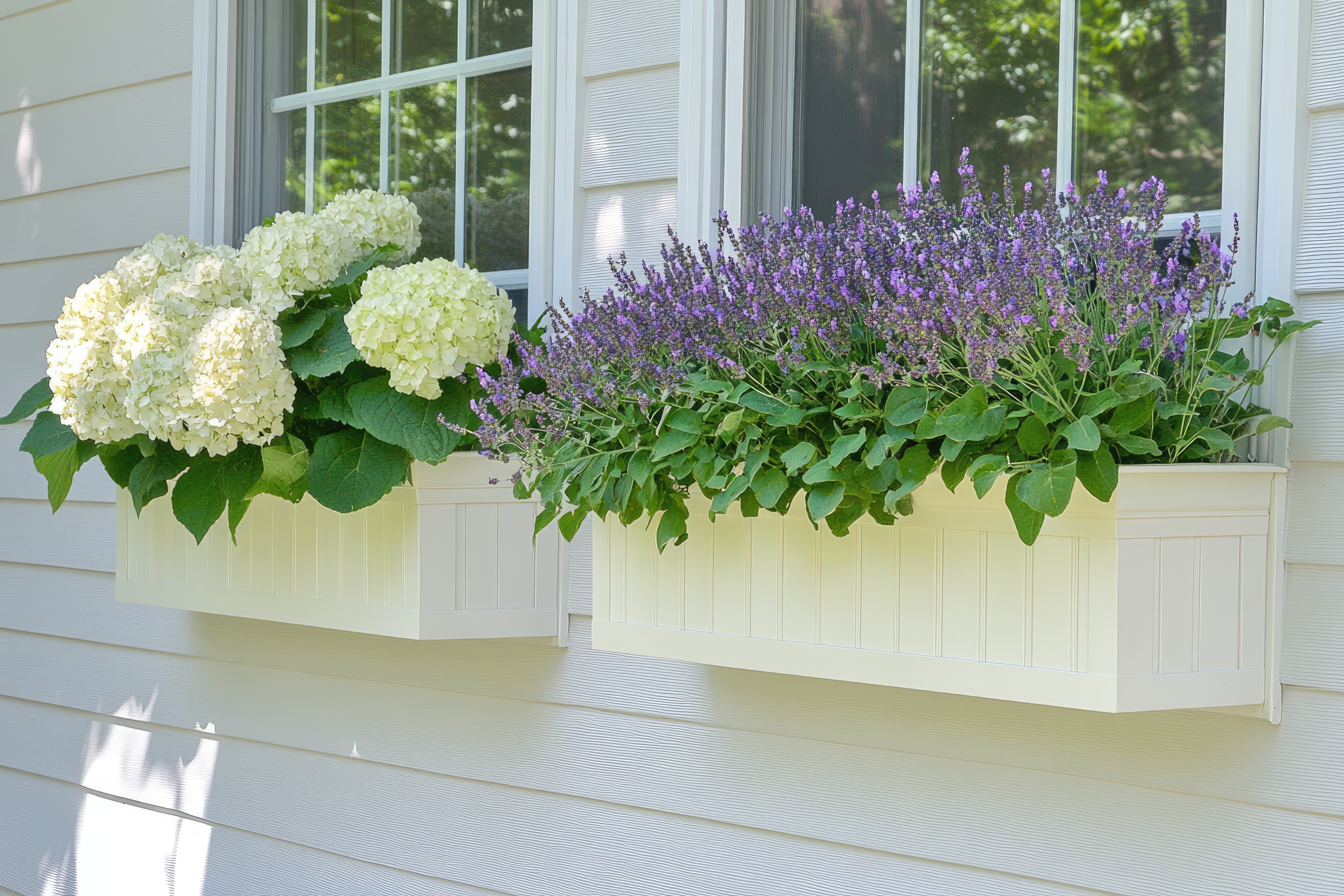
Window boxes are a fantastic way to add charm and greenery to your home. They bring color, fragrance, and even fresh herbs right to your windowsill. However, poor installation can lead to drooping plants, water damage, or even a fallen box.
In this article, you’ll learn the top mistakes to avoid when installing window boxes so yours stay secure and thriving.
1. Choosing the Wrong Material
Window boxes have various materials, each with unique benefits and challenges. Choosing the right one depends on your climate and how much upkeep you’re willing to handle.
Wood delivers a classic, natural aesthetic but needs regular sealing to avoid rot. Metal is strong and modern, though it may rust without protective coatings.
Plastic is budget-friendly and lightweight, but it can fade or crack in intense sunlight. Fiberglass offers durability and longevity, but its premium quality comes with a higher cost.
For a low-maintenance yet stylish option, consider solid PVC window boxes. They beautifully mimic the look of wood while resisting rot, warping, and fading, making them an excellent long-term investment.
2. Skipping Proper Measurements
Choosing the right window box requires careful measurements to ensure a perfect fit. One that’s too wide looks awkward, while a narrow one leaves gaps. Never assume all windows are the same size, and always account for brackets, mounting hardware, and exterior obstructions like shutters.
Measure twice: first the window frame, then the hanging space. For added convenience, consider self-watering window boxes or frost-resistant plastic for durability.
Universal hooks and wall or deck rail mounting offer flexible installation, while drip irrigation simplifies watering. Whether you prefer a simple window box or a more advanced planter, precise measurements guarantee a polished look and seamless function.
3. Ignoring Weight Capacity
A fully planted window box can be surprisingly heavy, especially when wet. Weak brackets or thin screws may not handle the load, leading to a dangerous collapse.
Avoid using flimsy hardware store brackets without checking weight limits or overloading the box with dense soil and large plants. If mounting on siding, ensure it’s sturdy and not rotting. Reinforce with heavy-duty brackets and secure them into studs or solid trim for maximum stability.
4. Poor Drainage Holes (or None at All)
Poor drainage causes water to pool at the bottom, which leads to root rot and attracting pests. Avoid forgetting to drill holes (at least ½-inch wide) or placing them too close together, which can weaken the box.
Soil can also clog the holes, so lining them with mesh helps. Aim for one hole every 6–8 inches to ensure excess water escapes efficiently.
5. Incorrect Mounting Height
Hanging a window box too high blocks sunlight, while placing it too low makes watering difficult. Avoid positioning it where plants touch the window, as this restricts light and airflow.
Also, ensure it doesn’t interfere with opening or closing the window. The ideal placement is just below the sill, allowing easy access for maintenance while maximizing sunlight exposure.

6. Overlooking Weather Exposure
Different window directions face varying weather conditions, south-facing boxes get intense sun, while north-facing ones stay damp and shaded. Avoid planting sun-loving flowers in shady spots or using materials that warp in rain or UV rays.
Wind exposure can also tip lightweight boxes, so secure them properly. Always match your plants and materials to your window’s specific conditions.
7. Weak or Incorrect Mounting Hardware
Rusty screws or weak anchors can cause your window box to fall unexpectedly. Avoid using short screws that don’t penetrate deeply or relying solely on adhesive strips, which fail under weight.
If mounting on drywall or brick, always use appropriate wall anchors. Stainless steel screws and sturdy brackets provide the strongest hold for long-term security.
8. Forgetting About Water Runoff
Excess water dripping down your walls can cause stains and rot over time. Avoid letting water seep behind the box by ensuring it has proper drainage.
Angling the box slightly forward helps direct water away from the wall, and adding a drip tray can prevent it from splashing back on siding. A small tilt makes a big difference in protecting your home’s exterior.
9. Overcrowding Plants
Packing too many plants into a window box leads to competition for space, resulting in weak or stunted growth. Avoid stuffing in more plants than the box can handle or ignoring mature plant sizes.
Some aggressive growers can overtake delicate flowers, so choose plants with similar growth habits. A good rule is three to four plants per 24-inch box, allowing enough room for roots to thrive.
10. Neglecting Maintenance
Gardening is a beloved retirement hobby, and window boxes add charm to any home, but they require consistent care to stay healthy and beautiful. Allowing dead leaves to accumulate can invite disease, while loose brackets may eventually give way.
To keep your window boxes thriving, refresh the soil between seasons and inspect their mounts yearly. With just a little attention, you can ensure they remain vibrant and secure for years to come.
Bottom Line
Installing window boxes seems simple, but small oversights can lead to big problems. Take the time to plan, measure, and install correctly, and your efforts will bloom beautifully. For expert guidance, consult a window box installation professional today.



